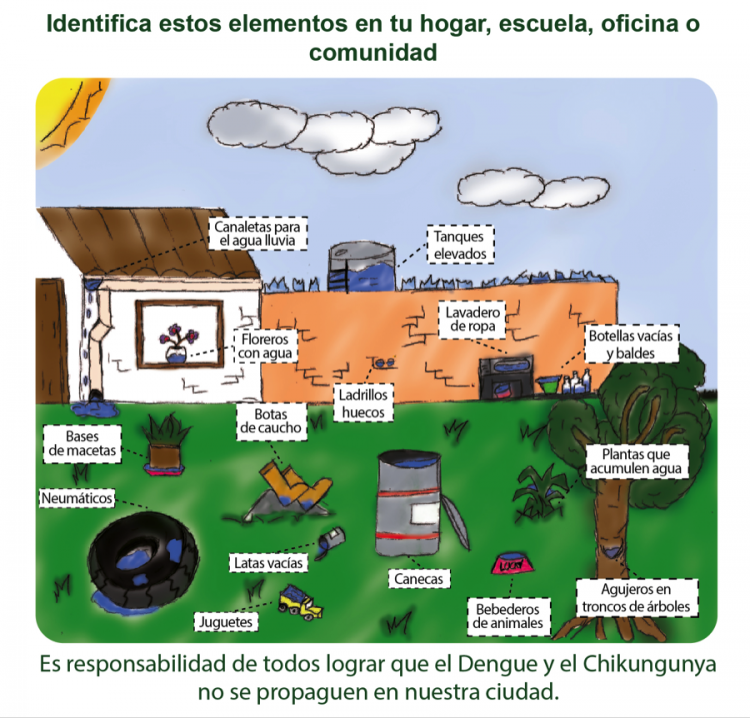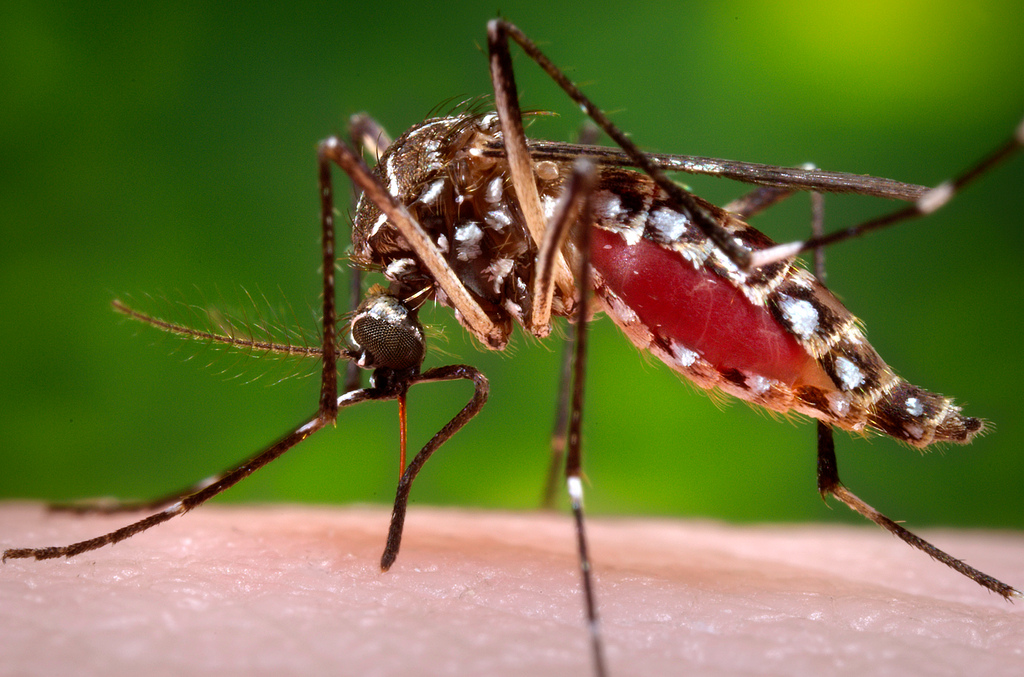The following is a guest post by Jennifer Peterson, who recently earned her PhD in disease ecology.
Chikungunya is a virus spread by the mosquito species Aedes aegypti, the same mosquito responsible for the transmission of dengue fever.
Infection with chikungunya usually leads to joint pain lasting for a few weeks. The virus was first identified in Tanzania in the 1950s but has only recently spread to the Western Hemisphere.
According to the Colombian Health Ministry, as of June 6th, 2015, there were a reported 266,933 confirmed cases in Colombia, leading people to ask, what the heck is Chikungunya, and should I be worried?
Is there Chikungunya in Medellín?
According to Rita Elena Almanza Payares, the leader of the Epidemiological surveillance program of the Secretary of Heath in Medellín, as of June 16th, there were 31 confirmed cases of Chikungunya infection in Medellín, with 340 more under investigation.
However, most cases were from people who travelled to Medellín from other areas of Colombia (for nice graphics of the distribution of Chikungunya in Colombia, click here), and the main vector-borne disease of concern here in Medellín is still dengue fever.
That said, we are not in the clear yet. As stated earlier, the mosquito species that transmits dengue in Medellín, Aedes aegypti, or more commonly known here as the “zancudo” is the same one that transmits the Chikungunya virus.
Thus, it is probably just a matter of time before the virus is transmitted by paisa mosquitos.

Should I be worried?
In a nutshell, I would say no. Chikungunya in Colombia has a very low mortality rate (0.01%) and is generally fatal to those already in poor condition. Moreover, the mosquito that transmits the virus is typically found in areas that look like the image above.
The picture is from the chikungunya information page on the Mayor’s office web page. Aedes aegypti mosquitos require standing water to breed, and thus will most likely be found in areas with standing water.
As you can see from the picture, I am not referring to swamps, but rather small pots of standing water that are usually the risk factors near human homes. Most likely, these are not the tourist areas of the city, but rather the more residential areas.
That said, it is always best to educate yourself on the symptoms of the disease and if you do believe you may have chikungunya, seek medical attention immediately!
_______
The first image in the story is courtesy of CDC Global.












I live in San Andres Isla and contracted Chikungunya in December 2014. It lasted for 4 long and frustrating months.
From the Internet, I gleaned a folk- or naturapathic remedy from writings by medical professionals in India and the Caribbean; that is, the fresh juice from papaya leaves – the *leaves*, not the fruit juice. The initial article I read confidently stated that you make the juice, take if for 3 or 4 days, and “you’ll be fine.” Perhaps it was due to my finding this remedy well into my second month, but my experience was not so fortunate.
I took the juice daily for about 3 weeks, and the pain totally dissipated. However, it returned at about 50% strength after 2 weeks without the remedy. I re-commenced the juice cure, and was running out of papaya leaves on our property, with little results. Finally, I sought the help of an M.D. on the island who practices homeopathic medicine; I was a disbeliever in homeopathy, having tried various remedies many, many years ago, with no success. With the drops I was given, the pain was gone in 5 days!
Most medical doctors know nothing of treating this illness; all they do is treat the symptoms, which I can assure you, has little effect; all they recommend for pain is acetamenophine and ibuprofen which – trust me – are a bad joke regarding their efficacy. Codeine did help, but you have to deal with constipation, and the concern for habituation.
I will say this: CDC is correct in one thing – “dibilitaing pain” is no exaggeration the first few days, forcing you to totter around like a 90-year old in great pain; also intense bi-phasic fever for about 3 or four days. First, it attacked vulnerable areas, sites of old joint injuries and arthritis. For me and most of the people I spoke to, the greatest pain was in the hands and feet; it was intense, seriously affecting my ability to stand, walk, descend stairs and grasp or hold things with my hands. I have a MountainSmith trekking pole, which was great assistance with walking; I found a typical cane to be of little help – it hurt my hand to lean on it, and I felt off-balance leaning to one side; the trekking pole was much more comfortable – I extended it to where my arm was bent at 90 degrees and forearm parallel to the ground, which was much more comfortable and stable. Although some people recovered in a matter of weeks, most people I know continue to be bothered with significant pain well past 6 months.
Hi Walter, this does sound terrible. Thank you for taking the time to share your experience.
I visited San Andres and Providencia earlier this year, and must admit, I didn’t know anything about Chikungunya until Jenni proposed an article about it.
Hi Walter,
This is very informative, thank you so much for sharing your experience. Luckily the virus is not yet being trasmitted in Medellin, but as I wrote, it is probably just a matter of time. You’re right, there is currently no modern medical treatment that can rid the Chikungunya virus from your body, making vector control very important. Do you remember the name of the drops you took, for other people experiencing Chikungunya reading this article? Were they made from the Papaya leaves?
~Jenni
Thanks for posting info on this timely and important subject. This disease is new to the western hemisphere and the medical profession is not experienced to treat it.
It was my understanding that the type of mosquito which carries the disease cannot tolerate cooler temperatures. I have read that above 1000m the risk for dengue and chikungunya is very low. Medellin is around 1500m.
In san jose costa rica, which is at 1100m the risk for dengue is quite low. They have had major outbreaks of dengue there with san jose not being affected.
What elevation would not be tolerated by the dengue transmitting mosquito.